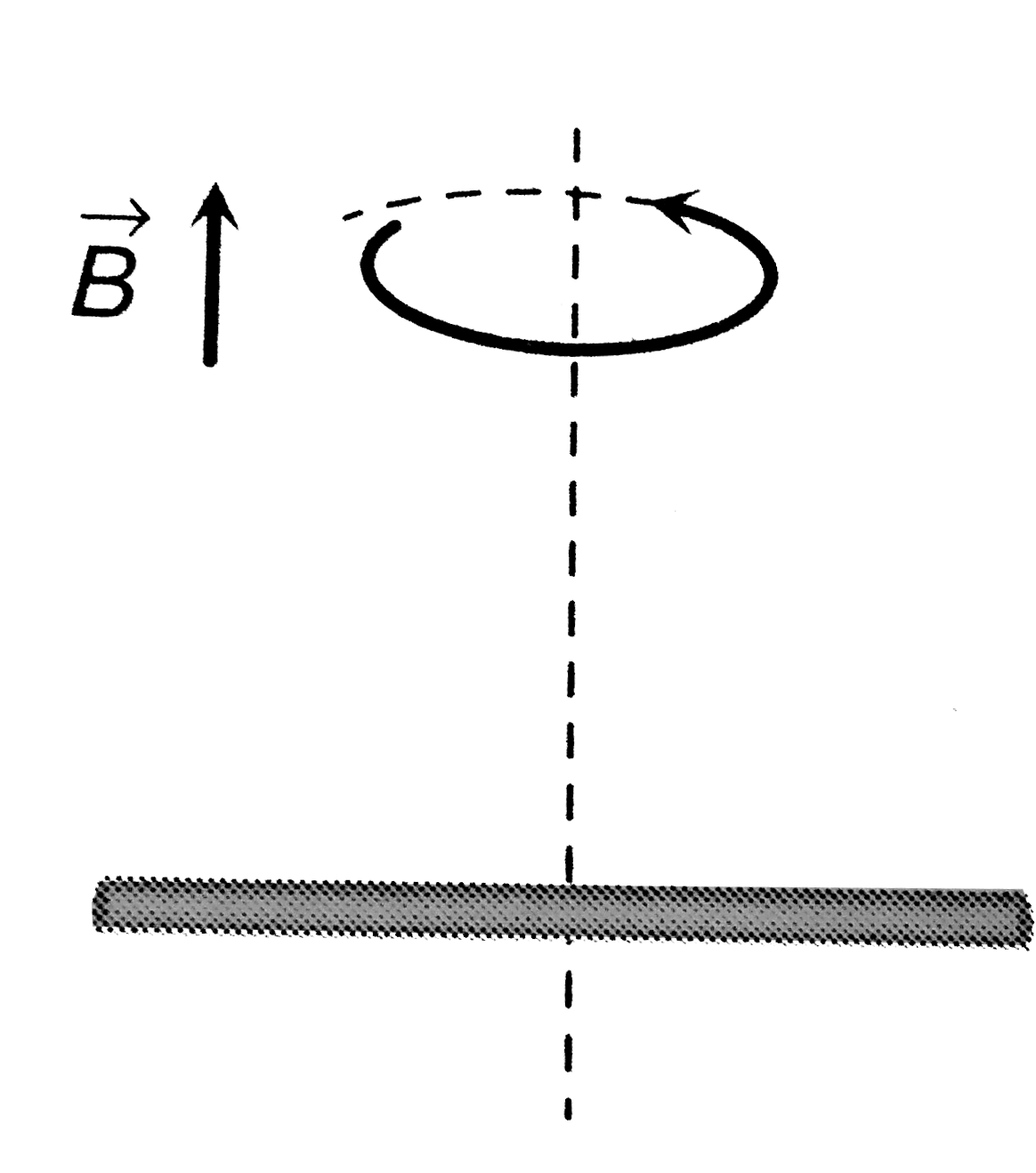A uniform metallic rod rotates about its perpendicular bisector with constant angualr speed. If it is heated uniformly to raise its temperature slightly, then a) its speed of rotation increases b) its speed of rotation decreases c) its speed of rotation remains same d) its speed increases because its moment of inertia increases
its speed of rotation increases
its speed of rotation decreases
its speed of rotation remains same
its speed increases because its moment of inertia increases
The correct Answer is:B
To solve the question, we need to analyze the effects of heating a uniform metallic rod that is rotating about its perpendicular bisector. Here are the steps to arrive at the correct answer:
Step 1: Understand the System
The rod is rotating about its perpendicular bisector with a constant angular speed. When an object rotates, it has a certain angular momentum, which is given by the product of its moment of inertia (I) and its angular velocity (ω):
L=I⋅ω
Step 2: Effect of Heating on the Rod
When the rod is heated uniformly, it expands. This expansion increases the length of the rod, which in turn affects its moment of inertia. The moment of inertia for a uniform rod rotating about its center is given by:
I=112mL2
where m is the mass and L is the length of the rod. As the length L increases due to heating, the moment of inertia I also increases.
Step 3: Conservation of Angular Momentum
In a closed system where no external torques are acting, angular momentum is conserved. Therefore, if the moment of inertia increases, the angular velocity must change to keep the angular momentum constant:
L=I⋅ω=constant
Step 4: Relationship Between Moment of Inertia and Angular Velocity
Since L is constant and I increases, we can express this relationship as:
I1⋅ω1=I2⋅ω2
Where:
- I1 and ω1 are the initial moment of inertia and angular velocity.
- I2 and ω2 are the moment of inertia and angular velocity after heating.
Given that I2>I1, it follows that:
ω2<ω1
This means that the angular velocity (speed of rotation) decreases.
Step 5: Conclusion
Therefore, the correct answer is:
b) its speed of rotation decreases.
The rod is rotating about its perpendicular bisector with a constant angular speed. When an object rotates, it has a certain angular momentum, which is given by the product of its moment of inertia (I) and its angular velocity (ω):
L=I⋅ω
When the rod is heated uniformly, it expands. This expansion increases the length of the rod, which in turn affects its moment of inertia. The moment of inertia for a uniform rod rotating about its center is given by:
I=112mL2
where m is the mass and L is the length of the rod. As the length L increases due to heating, the moment of inertia I also increases.
In a closed system where no external torques are acting, angular momentum is conserved. Therefore, if the moment of inertia increases, the angular velocity must change to keep the angular momentum constant:
L=I⋅ω=constant
Since L is constant and I increases, we can express this relationship as:
I1⋅ω1=I2⋅ω2
Where:
- I1 and ω1 are the initial moment of inertia and angular velocity.
- I2 and ω2 are the moment of inertia and angular velocity after heating.
ω2<ω1
This means that the angular velocity (speed of rotation) decreases.
Therefore, the correct answer is:
b) its speed of rotation decreases.
Topper's Solved these Questions
- THERMAL PROPERTIES OF MATTERBook:NCERT FINGERTPS ENGLISHChapter:THERMAL PROPERTIES OF MATTERExercise:Asseration and Reason
Explore 10 Videos
- THERMAL PROPERTIES OF MATTERBook:NCERT FINGERTPS ENGLISHChapter:THERMAL PROPERTIES OF MATTERExercise:Specific Heat Capacity
Explore 5 Videos
- THERMAL PROPERTIES OF MATTERBook:NCERT FINGERTPS ENGLISHChapter:THERMAL PROPERTIES OF MATTERExercise:Higher Order
Explore 8 Videos
- SYSTEM OF PARTICLES AND ROTATIONAL MOTIONSBook:NCERT FINGERTPS ENGLISHChapter:SYSTEM OF PARTICLES AND ROTATIONAL MOTIONSExercise:NCERT Exemplar
Explore 8 Videos
- THERMODYNAMICSBook:NCERT FINGERTPS ENGLISHChapter:THERMODYNAMICSExercise:Assertion And Reason
Explore 15 Videos
Similar Questions
Knowledge Check
A solid cylinder of mass M and radius R rotates about its axis with angular speed ω. Its rotational kinetic energy is
A12MR2ω2BMR2ω2C14MR2ω2D18MR2ω2
A particle moves in a circular path with a continuously increasing speed. Its motion is
View SolutionIf the speed of rotation of earth about its axis increases, then the weight of the body at the equator will
View SolutionA conducting rod of length 2l is rotating with constant angular speed w about its perpendicular bisector. A uniform magnetic field B exists parallel to the axis of rotation. The e.m.f. induced between two ends of the rod is

View SolutionA conducting rod of length 2l is rotating with constant angular speed w about its perpendicular bisector. A uniform magnetic field B exists parallel to the axis of rotation. The e.m.f. induced between two ends of the rod is

View SolutionWhat energy change takes place in a dc motor ? On what principle does it work? State one factor to increase its speed of rotation.
View SolutionA uniformly charged ring of radius R is rotated about its axis with constant linear speed v of each of its particle. The ratio of electric field to magnetic field at a point P on the axis of the ring distant x=R from centre of ring is (c is speed of light )

View SolutionA wheel of moment of inertia I and radius R is rotating about its axis at an angular speed ω. It picks up a stationary particle of mass m at its edge. Find the new angular speed of the wheel.
View Solution
